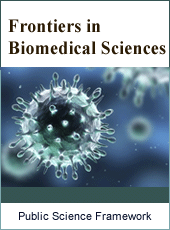Frontiers in Biomedical Sciences
Articles Information
Frontiers in Biomedical Sciences, Vol.1, No.2, Nov. 2016, Pub. Date: Nov. 12, 2016
Proximate and Phytochemical Analysis of Ziziphus mauritania Lam Leaves
Pages: 45-49 Views: 3786 Downloads: 3029
[01]
Akinsola R. O. Abubakar El-Ishaq, School of Science and Technology, Department of Science Laboratory Technology, Federal Polytechnic, Damaturu.
[02]
Zainab Adamu Nangere, School of Science and Technology, Department of Science Laboratory Technology, Federal Polytechnic, Damaturu.
Ziziphus mauritania Lam is a tree and its belongs to the family Rhammaceace. It is used as a medicinal plant especially its leaf and fruit. In this work the leaf of Z. mauritania was screened, investigated qualitatively for its phytochemical constituents, using the methods of Sofowora (1993). Oven dried pulverized leaf of the plant were sequentially extracted with ethanol, chloroform, and distilled water. The solvent shows ability to extract some components of the plant part especially ethanolic extract with high efficiency. Qualitative Phytochemical screening of the extracts shows the presence of flavonoids, alkaloids, saponins, tannins, resins and carbohydrates. Proximate nutritional analysis revealed the presence of; Moisture content 6.0±0.01%, Ash content 8.0±0.00%, Fat content 10.7±0.001%, Crude protein 28.18±0.00% and Carbohydrate 44.05±0.00%. The extracts therefore can be said to have phytochemical constituents as confirmed from analysis and this could be used as the justification for its ethnomedicinal importance in the communities where its uses for various ailments is popular.
Phytochemicals, Medicinal Plant, Ethnomedicinal, Proximate, Food
[01]
Abdu Adamu, and Yashim SM, (2009). Evaluation of processing methods on biochemical composition of Ziziphus (Ziziphus Mauritania) leaf meal. Trop. J. Anim. Sci. 2007; 10 (1-2): Pp. 441-3.
[02]
Aguinaldo, A. M., El-Espeso, B. Q. Guovara, M. G. Nanoto. (2005). Phytochemistry. In: Guevara B. Q (ed) A. Guide book to plant screening phytochemical and biological. University of Santo Tomas, Manila, Philippines.
[03]
Akpabio, U. D and Ikpe, E. E. (2013). Proximate composition and nutrient analysis of Aneilema aequinoctiale leaves. Asian Journal of Plant Science and Research, 3 (2): 55-61.
[04]
A. O. A. C. (1990). Official Methods of Analysis, Association of Analytical Chemists. 15th ed., Washington D. C. USA. 1121-1180.
[05]
Bhatia, and T. Mishra, (2009) “Free radical scavenging and antioxidant potential of Ziziphus Mauritian (Lam.) seed extract,” Journal of Complementary and Integrative Medicine, vol. 8, pp. 42–46, 2009.
[06]
Clifford S. C., Arndt S. K., Popp M. and Jones H. G.,(2002). Mucilages and polysaccharides in Ziziphus species (Rhamnaceae): localization, composition and physiological roles during drought-stress, Journal of experimental Botany, 53 (366), 131-138.
[07]
Dahiru, D. and Obidoa, O. (2007). “Pretreatment of albino rats with aqueous leaf extract of Zizyphus mauritiana protects against alcohol induced liver damage,” Tropical Journal of Pharmaceutical Research, vol. 6, pp. 705–710.
[08]
Egwim, E. C., R. C. Elem and R. U. Egwuche, (2011). Proximate composition, phytochemical screening and antioxidant activity of ten selected wild edible Nigerian mushrooms. Ann. Rev. Ecol., 1: 89-94.
[09]
Kebu, B., and Fassil, k. (2006). Ethnobotanical study of wild edible plants in Derashe and Kucha Districts. South Ethiopia.
[10]
Keay R. W. J. (1989). Trees of Nigeria. Clarendon Press, Oxford, New York. Pp 34-46.
[11]
Michel A (2002). Tree, Shrub and Liana of West African Zones. Margraf Publishers GMBH, Paris. P. 440.
[12]
Morton, J. (1987) “Indian jujube,” in Fruits of Warm Climates, J. F. Mortan and F. L. Miami, Eds., pp. 272–275, Center for New Crops & Plant Products, Purdue University, Lafayette, Ind, USA.
[13]
Orwa, C.; Mutua, A.; Kindt, R.; Jamnadass, R.; Anthony, S., (2009). Agroforestree Database: a tree reference and selection guide version 4.0. World Agroforestry Centre, Kenya.
[14]
Singh, J. S. & V. K. Singh, V. K. (1992). Phenology of seasonally dry tropical forest. Current Science, 63 (11): 684-689.
[15]
Singh KP, Kushwaha CP. (2005). Emerging paradigms of tree phenology in dry tropics. Curr. Sci. 89: 964-975.
[16]
Sofowora A. (1993). Medicinal Plants and Traditional Medicines in Africa. Chichester John Wiley & Sons. New York, pp: 97-145.
[17]
Trease GE, Evans WC. (1985). Pharmacognosy 17th edn., Bahiv Tinal, London. P 149.
[18]
Zhao Y., Jiang F., Liu P., Chen W., and Yi K. (2012). Catechins containing a galloyl moiety as potential anti-HIV-1 compounds. Journal of drug discovery today. Vol 17 (11/12), pp 630-635.

ISSN Print: Pending
ISSN Online: Pending
Current Issue:
Vol. 2, Issue 4, July Submit a Manuscript Join Editorial Board Join Reviewer Team
ISSN Online: Pending
Current Issue:
Vol. 2, Issue 4, July Submit a Manuscript Join Editorial Board Join Reviewer Team
| About This Journal |
| All Issues |
| Open Access |
| Indexing |
| Payment Information |
| Author Guidelines |
| Review Process |
| Publication Ethics |
| Editorial Board |
| Peer Reviewers |


